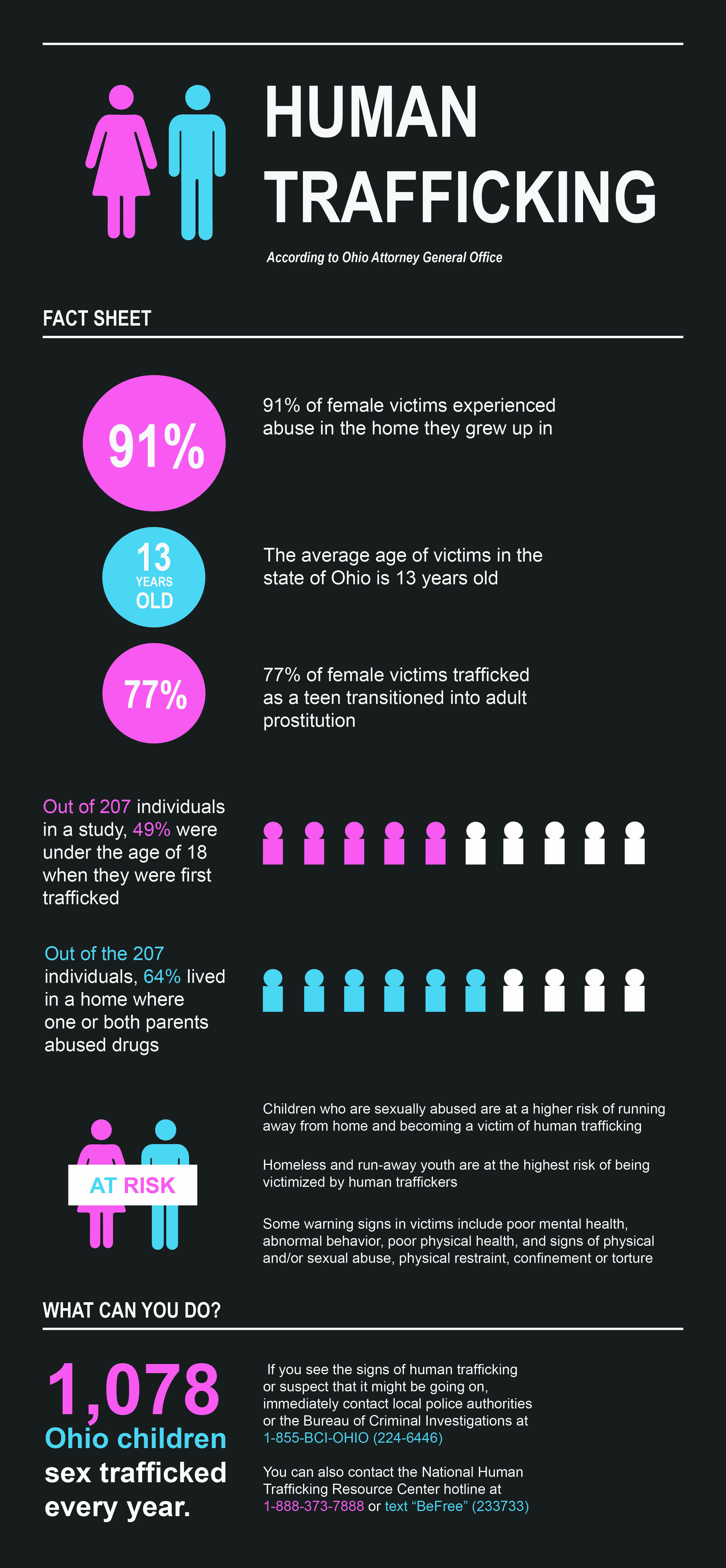January: National Slavery and Human Trafficking Prevention Month
January 22, 2019
What is human trafficking?
Human trafficking involves sex trafficking, labor trafficking, organ trafficking, child trafficking for labor/sex, and is defined in federal law as a type of slavery.
Who does it affect?
According to the Ohio Attorney General’s (OAG) office, it is “estimated that 1,078 Ohio children are sex trafficked every year.” The OAG performed a study of 207 individuals who were victims of sex trafficking, 49 percent were under the age of 18 years old when they were first trafficked. The study found that the average age of victims in the state of Ohio is 13 years old. Also, 91 percent of females of those 207 victims experienced abuse at the home they grew-up in prior to being taken. This is also due in part that children who are sexually abused are at a higher risk of running away from home. Homeless and run-away youth are at the highest risk of being victimized since there are not many people who know their day-to-day whereabouts. Additionally, 77 percent of female victims trafficked in their youth then transitioned into prostitution as adults. Drug abuse by one or both parents affected 64 percent of the 207 victims.
What does human trafficking look like?
There are various indicators to human trafficking including;
- Poor mental health
- Abnormal behavior
- Poor physical health
- Signs of physical and/or sexual abuse
- Signs of physical restraint, confinement or torture
Human trafficking also includes labor trafficking which is defined by the National Human Trafficking Hotline as “a form of modern-day slavery in which individuals perform labor or services through the use of force, fraud, or coercion. Labor trafficking includes situations of debt bondage, forced labor, and involuntary child labor.” The OAG compiled a list of warning signs if labor trafficking is suspected. These warning signs include;
- Sleeping bags are visible, possibly indicating that employees are living in the same place where they work and that backrooms appear to be living spaces.
- Workers are driven to their employment in groups all at once.
- When a worker answers casual questions, their answers seem scripted or rehearsed.
- Workers may appear exceptionally young and are fearful or particularly submissive.
- Small children are serving in a family restaurant.
- Security measures are in place that appear to keep people inside an establishment (i.e., barbed wire inside of a fence, bars covering the insides of windows).
- People are not being allowed to go into public alone or speak for themselves.
What can you do to help?
January is National Slavery and Human Trafficking Prevention Month. Join us in wearing blue to not only spread awareness, but also support past and current victims and help the efforts to protect future ones. Show us your blue with hashtag #WearingBlueForYou! If you want to help us even more in our calling to teach and help our local youth, feel free to donate by clicking the button below!

If you suspect or observe human trafficking, immediately contact local police authorities or the Bureau of Criminal Investigations at 1-855-BCI-OHIO (224-6446). You can also contact the National Human Trafficking Resource Center hotline at 1-888-373-7888 or text “BeFree” (233733).

